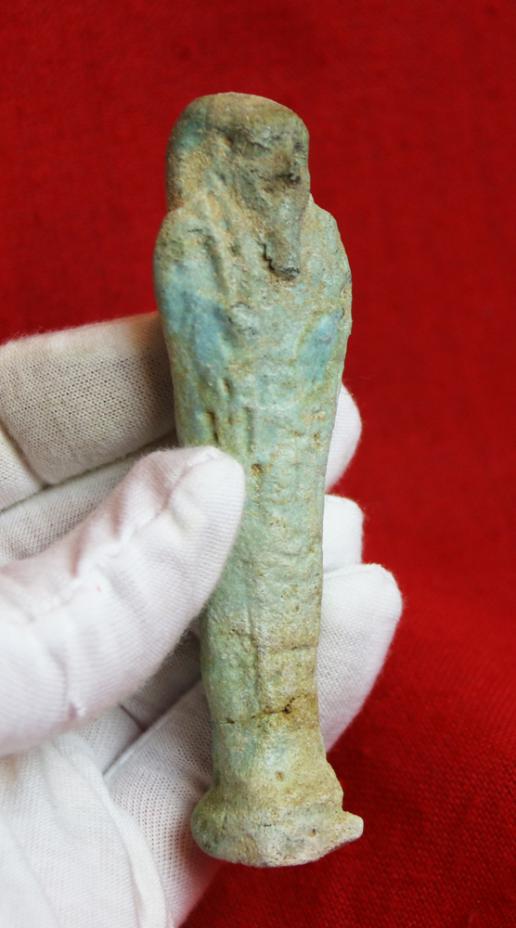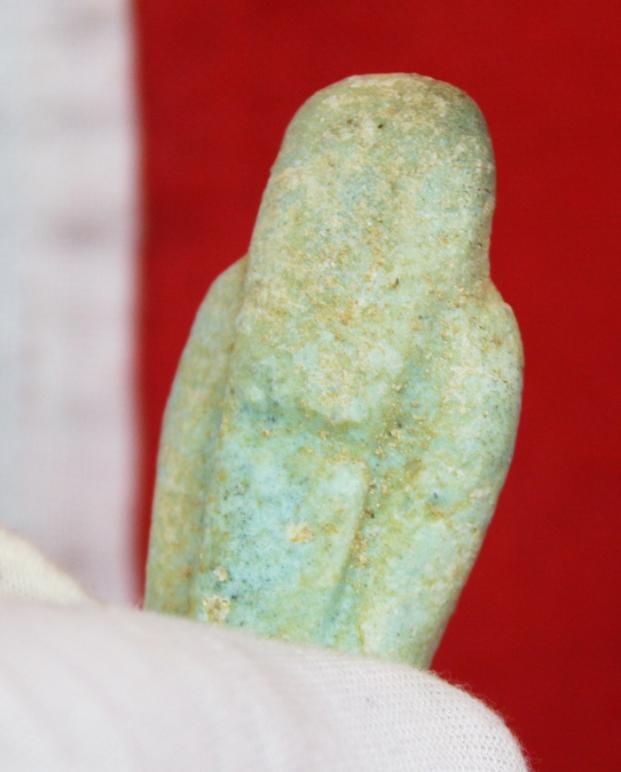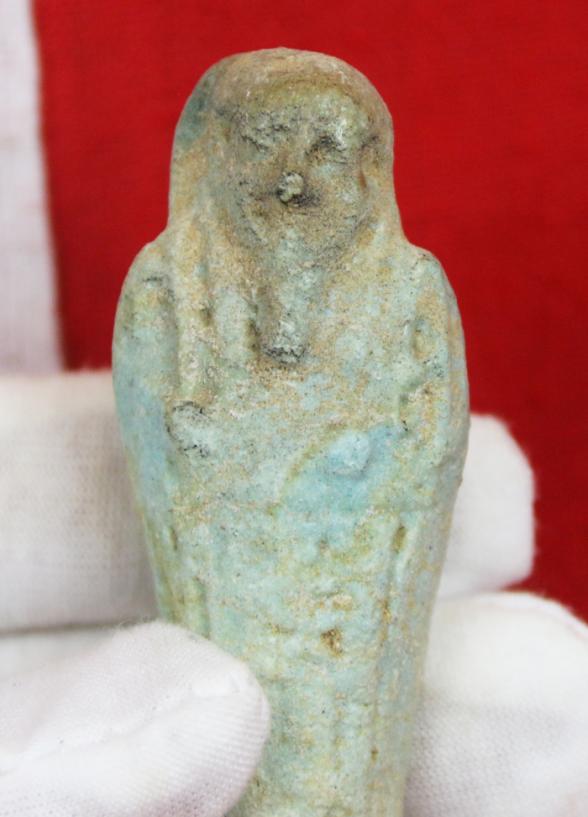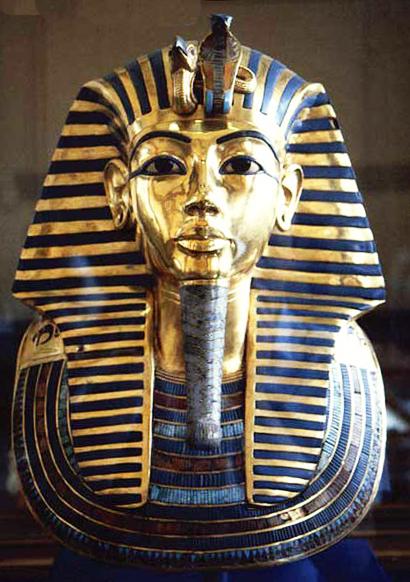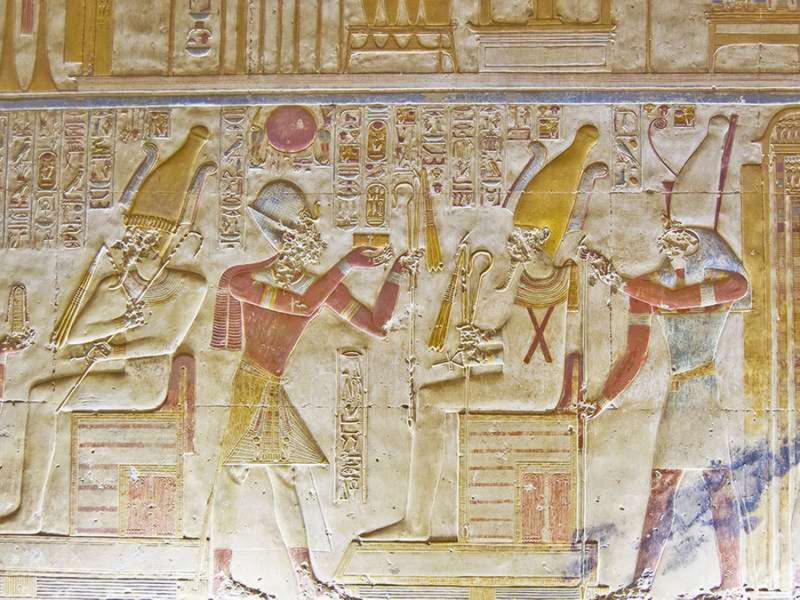Ancient Egyptian Blue Glazed Hieroglyphic Shabti
Late Period, 664-332 BC
Shabtis (or ushabtis) were figurines in mummified form, which were placed in Egyptian tombs to do any work required by the deceased in the afterlife. They were inscribed with a special formula (Shabti formula), which would call them to life when recited. Sometimes shabtis were also inscribed with passages from the Book of the Dead, the intention of which was to secure safety for the deceased in the afterlife. Shabtis were mostly made of faience, but wood, bronze, and stone were also used – towards the Late Period, the number of shabtis inside the tomb increased, eventually allowing one for each day of the year.
A pale blue-glazed composition shabti with tripartite wig and false beard, vertical column of dedication hieroglyphic text to the lower body, plain dorsal pillar and square base. The Twenty-sixth Dynasty of Egypt (notated Dynasty XXVI, alternatively 26th Dynasty or Dynasty 26) was the last native dynasty to rule Egypt before the Persian conquest in 525 BC (although others followed). The dynasty's reign (664–525 BC) is also called the Saite Period after the city of Sais, where its pharaohs had their capital, and marks the beginning of the Late Period of ancient Egypt.This dynasty traced its origins to the Twenty-fourth Dynasty. Psamtik I was probably a descendant of Bakenranef, and following the Neo-Assyrian Empire's invasions during the reigns of Taharqa and Tantamani, he was recognized as sole king over all of Egypt. While the Neo-Assyrian Empire was preoccupied with revolts and civil war over control of the throne, Psamtik threw off his ties to the Assyrians circa 655 BC, formed alliances with King Gyges of Lydia, and recruited mercenaries from Caria and ancient Greece to resist Assyrian attacks.
With the sack of Nineveh in 612 BC and the fall of the Assyrian Empire, both Psamtik and his successors attempted to reassert Egyptian power in the Near East, but were driven back by the Neo-Babylonian Empire under Nebuchadnezzar II. With the help of Greek mercenaries, Apries was able to hold back Babylonian attempts to conquer Egypt. The Persians would eventually invaded Egypt in 525 BCE, when their king, Cambyses II, captured and later executed Psamtik III. The Shabti is 43 grams, 99mm (4"] high.
Code: 23233
Price
on
Request


